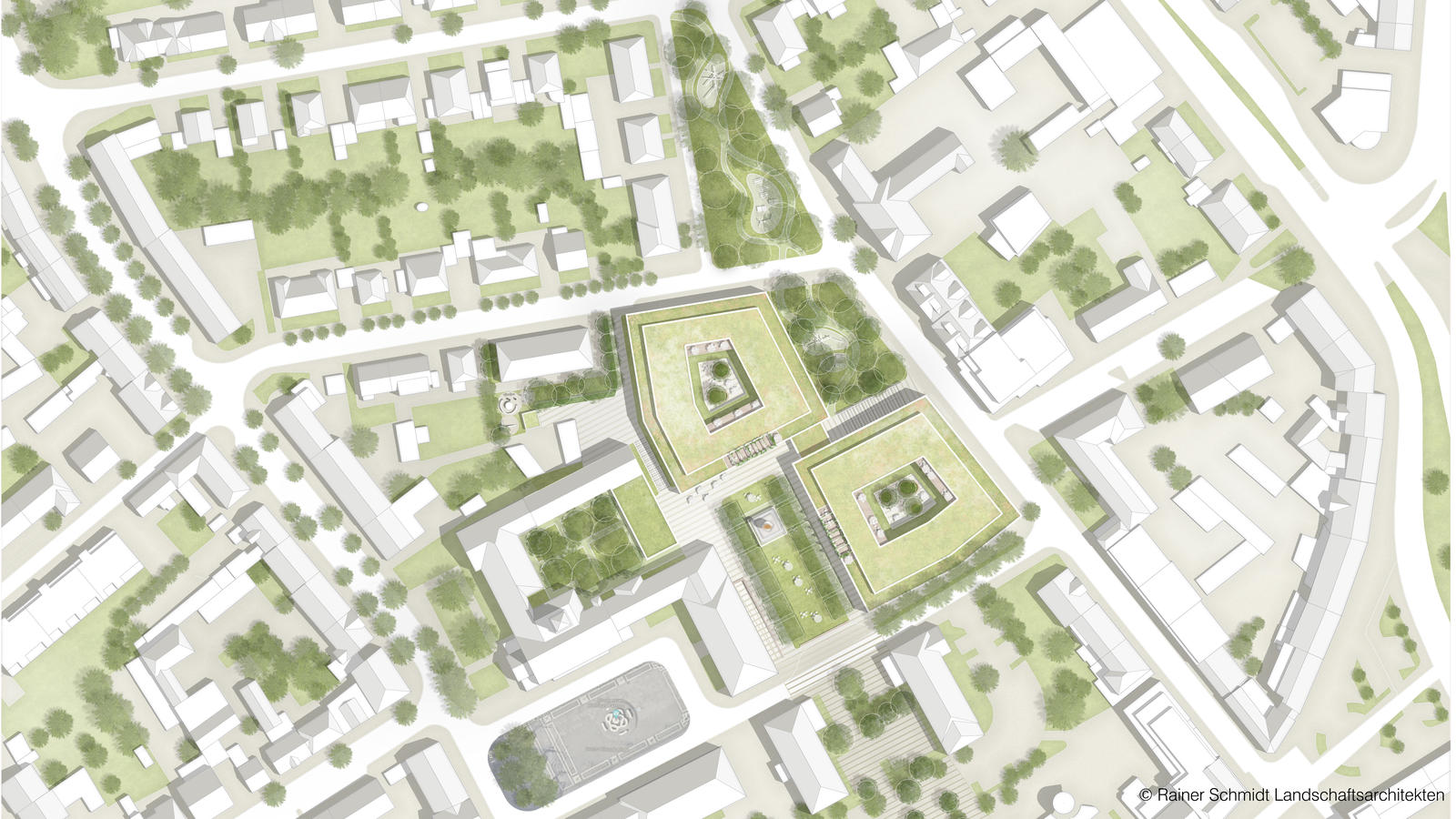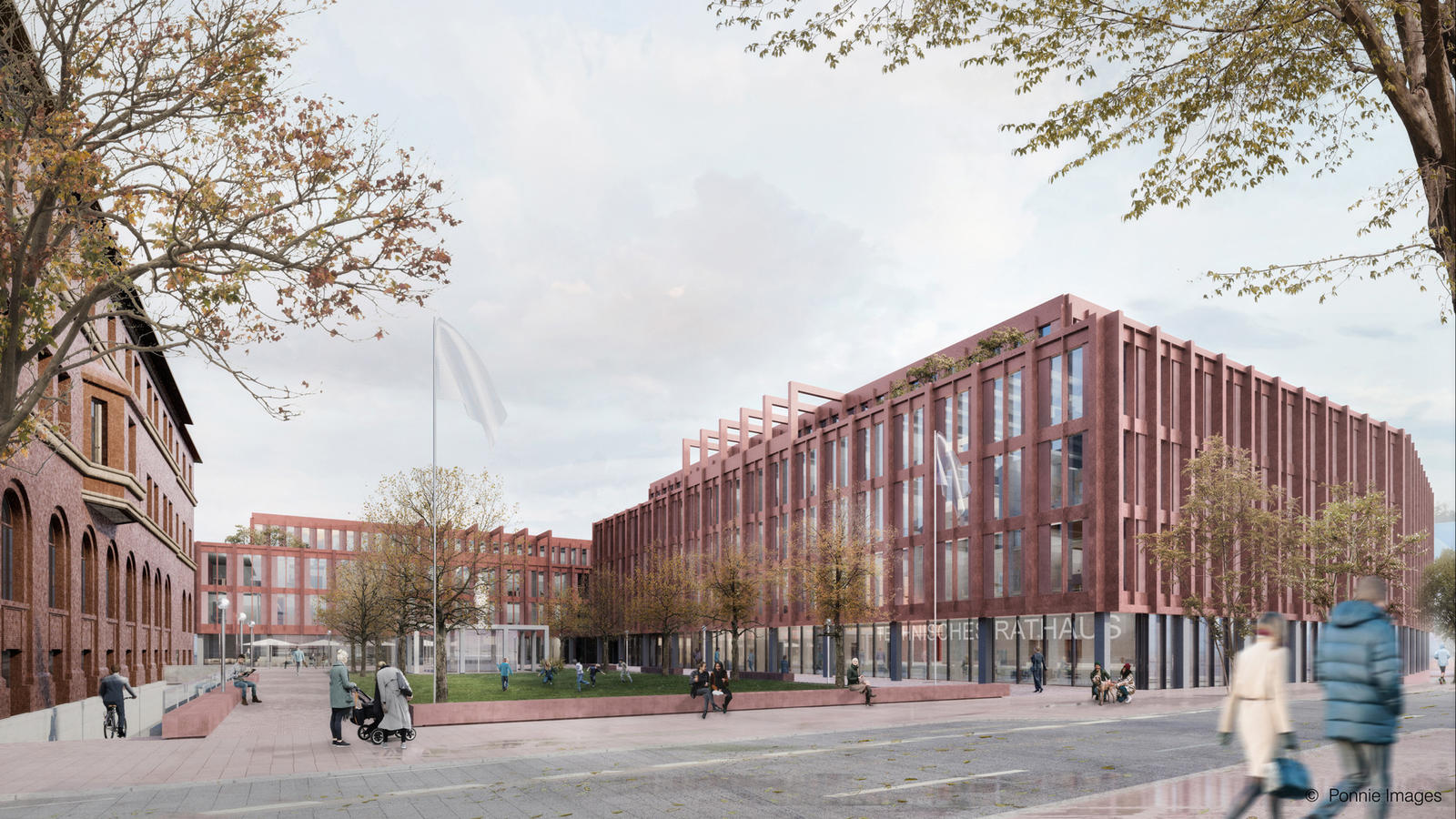2023
Our concept is based on a future-oriented idea without undermining the history and monument protection of the existing buildings. Thus, the arrangement of the new buildings is aligned with the existing buildings and oriented in such a way that an inviting square atmosphere opens up, the Droste-Hülshoff-Platz. It´s in line with the building lines of the listed buildings while representing the entrance area to the new buildings creating a connection between the city hall sections. The generous green space in the center of the square, with high ecological value, creates space for versatile uses, such as meeting and communication point, as well as an event space. The linear structure of the trees along the green space provides shade and at the same time prevents the square from heating up. A statute placed on the entrance to the underground parking garage forms an additional eye-catcher.
A one-floor, transversal building separates the new square from a semi-public garden located between the existing buildings. The linear structure of the main square is continued that is reminiscent of a historic cloister garden. Small zones are divided by hedges and flowering meadows and made experiencable by benches. This creates an optimal retreat for employees. In the north-western part of the site, the daycare center and the delivery area will be spatially separated from each other. For this purpose, the outdoor areas of the daycare center will be surrounded by a green frame accompanied by large tree plantings. The trees not only serve as boundaries, but also provide shade for romping and playing. Following the property further, green area meets the site in the north-eastern part. This green area is revaluated into a pocket park and continued in the same style on the campus leading to a integration into the overarching urban environment. The large tree plantings and play areas create an attractive green space within the urban fabric that invites people to walk, play or meet. At the end of the park, a wide public passage is created between the buildings, leading back to Droste-Hülshoff-Platz. The new buildings are connected here by a glass bridge, creating a kind of gate. The inner courtyards of the buildings are dominated by a pavement surface that features banding and light shades. This pavement pattern runs as a carpet over the entire outdoor facilities contributing to the uniform ensemble. Green accents are set here by raised beds with tree plantings providing places of retreat and communication for the employees. The polygenic form of the new buildings fits with the urban edges of the surroundings, creating a holistic ensemble in harmony with the city.
The high number of green areas contributes significantly to improving the inner-city climate and also supports biodiversity in the form of insect and bird supporting plants. Thus, the campus forms an important stepping stone biotope. Following the principle of the sponge city, rainwater is drained off and excess water is used to irrigate the green spaces. Thus, a sustainable water management is created, which revisits the future-oriented basic idea.


